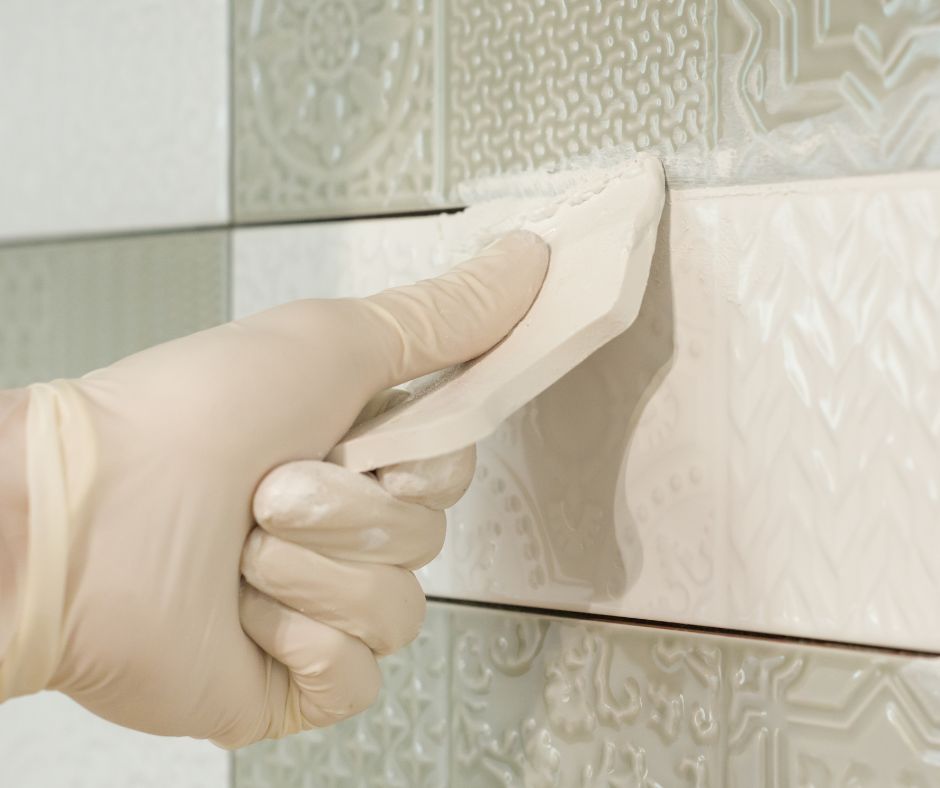Have you noticed unsightly holes appearing in your shower tile grout?
Don’t panic! While these imperfections can detract from your shower’s overall visual appeal, they are manageable and can be swiftly addressed. It’s essential to tackle these issues promptly to prevent more severe problems from developing in the future.
Here’s the silver lining – repairing these holes is simpler than you might think!
This in-depth guide will walk you through a meticulous, step-by-step process for effectively fixing holes in your shower tile grout. Additionally, we will delve into the common causes of grout damage and share valuable preventive tips to help you avoid encountering these issues in the future.

Learn How to Expertly Repair Holes in Your Shower Tile Grout with Our Comprehensive Guide
Repairing those pesky grout holes may seem intimidating at first glance, but it’s actually a straightforward and manageable process. Let’s embark on this journey together as I guide you through the essential steps to restore your shower to its immaculate condition.
#1 Gather Essential Tools for a Smooth Grout Repair Experience
Before diving into your grout repair project, it’s vital to gather all the necessary supplies to ensure the task is efficient and effective. Here’s a detailed list of items you will need:
- Specialized grout removal tools
- Caulk gun
- Grout that matches your existing tile color
- Grout float for an even application
- A sponge for cleaning up
- A bucket of water for rinsing
- Masking tape for creating clean edges
Always remember to wear gloves and safety glasses to protect yourself during the repair process. Having all your tools organized beforehand will streamline the entire procedure, making it less stressful and more enjoyable.
Also Read: Epoxy Grout VS Cement Grout
#2 Prepare Your Shower Area for Effective Grout Repair
Now that your tools are ready, it’s time to prepare the area for repair. Start by applying masking tape around the grout lines where the holes are present.
This step is crucial; it helps maintain the new grout in place, guaranteeing a clean and professional finish.
Next, gently use your grout removal tool to extract the old, damaged grout. Exercise caution to avoid scratching the tiles, and if you’re working in a shower, take care not to damage the waterproof membrane beneath the tiles. This preparation phase is vital, as it creates a clean and stable surface for the new grout to adhere effectively.
Also Read: Why Grout Gets Stained And Damaged
#3 Clean the Grout Workspace Thoroughly Before Applying New Grout
After removing the old grout, it’s essential to clean the workspace meticulously. Use a slightly damp cloth to wipe down the surface, eliminating all dust and debris left from the grout removal process.
It’s critical to allow the area to dry completely before applying the new grout; a dry surface significantly enhances the adhesion of the new grout, ensuring a durable and long-lasting repair.
#4 Skillfully Apply New Grout for a Smooth and Flawless Finish
Now comes the exciting part! Prepare your grout according to the instructions provided on the packaging.
Aim for the perfect consistency – not too watery and not overly thick. Use your grout float to apply the new grout over the holes, ensuring you push it in at an angle. This technique is essential as it helps fill all gaps and creates a smooth, even finish.
Once the holes are filled, use the float to level the surface and remove any excess grout, ensuring a neat and professional appearance. Taking the time to apply the grout skillfully will make a remarkable difference in the overall aesthetic of your shower.
#5 Carefully Wipe Away Excess Grout for a Professional-Looking Finish
After allowing the grout to set for a short period, take your damp sponge and gently wipe away any excess grout.
Be sure to rinse the sponge frequently to avoid letting grout dry on it, as this can complicate the cleaning process later. This step requires patience, but achieving a polished, professional appearance is well worth the effort. Take your time to ensure everything looks perfect before allowing it to dry completely and removing the masking tape.
Also Read: Regrouting Your Bathroom Grout
#6 Optional: Seal the New Grout to Enhance Longevity and Durability
If you want to boost the longevity of your grout, consider applying a grout sealer.
While this step isn’t mandatory, it can offer substantial protection against moisture and stains, thereby extending the life of your repair. If you choose to seal the grout, make sure to wait a few days for it to fully cure before applying the sealer.
Follow the manufacturer’s instructions for optimal results, and you will add an extra layer of protection to keep your grout looking fresh and vibrant for years to come.

Understand the Causes of Grout Damage and Implement Effective Prevention Strategies
Have you ever taken a moment to consider what causes those unsightly holes in your grout in the first place?
The primary culprits are usually moisture and aggressive cleaning methods. Grout is naturally porous and can deteriorate over time, especially if it isn’t adequately sealed. Moreover, showers are frequently exposed to constant moisture and regular cleaning, which can exacerbate the problem.
Additionally, natural settling of the house can lead to minor shifts that create cracks or holes in the grout.
To prevent future holes from developing, consider sealing your grout after installation or repair.
Using gentle cleaning products can also prolong the life of your grout. Avoid harsh chemicals that can degrade grout over time.
Regularly inspecting your shower grout for any signs of damage can also be beneficial.
Addressing any issues as soon as they arise will help prevent them from escalating into more significant problems.
Essential Insights for Successful Grout Repair
Repairing holes in your shower tile grout is entirely achievable on your own, and doing so can prevent more significant, costly issues from arising in the future.
However, if you prefer professionals to handle this task, we are here to assist you. Our team can efficiently complete the regrouting process, relieving you of the hassle.
Regardless of your choice – addressing those holes will help maintain your shower’s functionality and aesthetic appeal for many years to come!
What to Do If Your Contractor Left Holes in Your Grout?
If you’ve recently had renovations in your bathroom and discovered holes in the grout, it’s crucial to reach out to your contractor immediately. A reputable professional should ensure that no holes or imperfections remain in the grout.
Most reliable contractors will gladly return to rectify these issues promptly.
How Can You Repair Pin Holes in Grout Effectively?
To address pin holes in the grout, start by cleaning the area thoroughly and lightly dampening the surrounding grout. Next, press a small amount of grout into the holes, smoothing the patched area with your finger for a seamless finish that blends perfectly with the existing grout.
What’s the Correct Method for Repairing Missing Grout in the Shower?
Fixing missing grout is quite similar to repairing holes. Begin by ensuring the area is thoroughly cleaned, then apply new grout to the affected spots. Utilize your grout float to smooth it out, ensuring a level finish. Finally, remove any excess grout and allow it to dry completely for optimal results.

The Article: Holes in Shower Tile Grout? Effective Solutions Inside! first appeared on https://writebuff.com.
The Article Effective Solutions for Holes in Shower Tile Grout Was Found On https://limitsofstrategy.com


One response
I appreciate how you’ve highlighted the importance of addressing grout holes in a shower—it’s one of those home maintenance tasks that often gets overlooked. I recently faced a similar situation in my own bathroom, and I was surprised at how much it affected the overall aesthetics. It’s interesting how something as small as grout can impact our perception of cleanliness and comfort in our personal spaces.